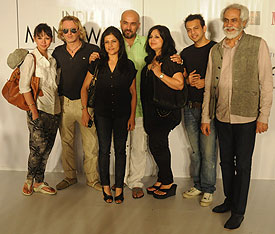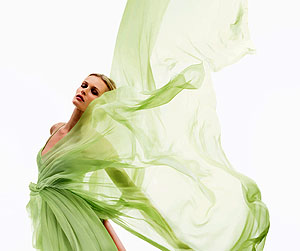
 The 3rd edition of the Van Heusen Mens Week to be held from 2nd September to 4th September, saw over 250 male models participating for the auditions, at The Grand, New Delhi.
The 3rd edition of the Van Heusen Mens Week to be held from 2nd September to 4th September, saw over 250 male models participating for the auditions, at The Grand, New Delhi. 

 The 3rd edition of the Van Heusen Mens Week to be held from 2nd September to 4th September, saw over 250 male models participating for the auditions, at The Grand, New Delhi.
The 3rd edition of the Van Heusen Mens Week to be held from 2nd September to 4th September, saw over 250 male models participating for the auditions, at The Grand, New Delhi. 

Especially during the monsoons and any other défavorables weather conditions we do remember the most essential element of our habillage, that is, the shoe. In fact, it was inventé during the monsoon season to safeguard the human feet and also to circumvent mud in the king’s court en 16th century in Mesopotamia.
For all shoe-lovers a must read is ‘Fifty Shoes that changed the World’ published by the Design Museum, that traces l’histoire of shoes industrie and highlights 50 brands that had lead to an revolution in the sabot-de-frein industrie.
Parmi tous, Sourendra Kumar Das delves into the pages du livre et bring for you 5 must have à-la-mode shoe styles for every fashionista –
All Star Basketball Shoe
Today this shoe has gone way beyond the basketball pitch that it was originally created for and is one of the iconic and versatile examples of twentieth century footwear design in modern times. It was créé almost a century back in 1917 in Massachusetts and it transcends fashion categories and genres aujourd’hui.

Crocs Shoes
Ce chaussures are a product of this century and came into existence only in 2002 as outdoor boating shoes but grandi to have an all-out cult like fan following. Fun colours and the light weight comfort that comes from its uniques Crocslite technology makes it an anytime and anywhere vêtements of all age groups. Crocs have grown beyond the chunky clogs that still remain their classic unique style. Today it has diversifies into various styles across categories without compromising on its promise of quality or comfort.

Slingback Sandals
These emerged as the latest thing in the 1930s and has revisited ever since by both haute-couture designers and mainstream manufacturers. During the wartime, it was hit by Shaftesbury shoes and latter became an item of luxury post war years. The shoe lends itself both to casual and dress occasions and can be slipped on to the feet without the need of fiddling with the strap or buckle, making it most desirable.

Stilettos
The piercingly pointed shoe heel that emerged after World War II was the must have apparel of every self-respecting female fatale. The heel style can be dated back to the 18th century and it was reformulated in the 1950s by française dessinateur Roger Vivier. This has become one of the most essential parts of a woman’s wardrobe in modern times.

Flip flops
This started out as an affordable option in developing countries and latter took the world by storm merely by the comfort it offered. It has a distinguished pedigree that stretches back to the Japanese rice-straw sandals known as ‘Zori’. Flip-flops are also popular with those who enjoy being barefoot but need to wear shoes, because they allow the foot to be out in the open but still constitute a shoe for wear in places such as restaurants or on city streets, and can be quickly and easily removed. They are also popular because they are easy to carry and come in an assortment of colors and patterns.

So, cette mousson you know what ensembles preeminent for your feet – Aller à venir et explore le monde of shoes…

 Two graduates, Azusa Murakami and Alexander Groves of UK’s Royal College of Art lately made a 100% biodegradable collection of sustainable fashion eyewear exploring the potential of Human hair. The collection of glasses where frames are made of human hair is named ‘Hair Glasses’.
Two graduates, Azusa Murakami and Alexander Groves of UK’s Royal College of Art lately made a 100% biodegradable collection of sustainable fashion eyewear exploring the potential of Human hair. The collection of glasses where frames are made of human hair is named ‘Hair Glasses’.
It comprises of human hair with bio resin as a binding agent, the frames are 100% biodegradable and no harmful substances are released during production. It explores how the booming production of hair extensions can be expanded beyond the beauty industry to make other commodities that are equally desirable.

Though this isn’t the only hairy trend we’ve spotted of late, necklaces made of human hair, have previously witnessed it but the glasses are definitely a more viable option. One would never know from looking at them—a more than passable tortoiseshell effect is achieved by weaving black, blonde, and brown strands together in an intricate pattern.


 Couturier duo Ashima Leena is set to enthrall all and sundry at the upcoming Delhi Couture Week 2011 with its collection titled, ‘The Revival of a lost Charm’.
Couturier duo Ashima Leena is set to enthrall all and sundry at the upcoming Delhi Couture Week 2011 with its collection titled, ‘The Revival of a lost Charm’. these garments are a sensual delight, gossamer thin silks combined with the mellowed richness of old gold brocades, muted brights, refined and restrained over and over again. Layering is in focus here-sheer fabrics overlapping colour over colour, texture over texture, intermingling to create stunning beauty.
these garments are a sensual delight, gossamer thin silks combined with the mellowed richness of old gold brocades, muted brights, refined and restrained over and over again. Layering is in focus here-sheer fabrics overlapping colour over colour, texture over texture, intermingling to create stunning beauty. 


 The ‘intelligent look’ is quite rampant this season – ‘He’ is the guy who wakes up from the bed with an attitude and goes out de-tous-côtés carrying l’same. One of the fashion houses that values and stocks the apparels fit for the ‘intelligent look’ is Jack & Jones in Bandra, Mumbai.
The ‘intelligent look’ is quite rampant this season – ‘He’ is the guy who wakes up from the bed with an attitude and goes out de-tous-côtés carrying l’same. One of the fashion houses that values and stocks the apparels fit for the ‘intelligent look’ is Jack & Jones in Bandra, Mumbai.
 Coco Chanel once famously said that women who don’t wear perfume have no future. So carrying the legacy of fashion genius, the label unveils its latest fragrance, Chanel N0 19 Poudre.
Coco Chanel once famously said that women who don’t wear perfume have no future. So carrying the legacy of fashion genius, the label unveils its latest fragrance, Chanel N0 19 Poudre.  best that can be achieved in a good artisanal way. Along with several interesting musks, Iris is the main ingredient of the fragrance which is quite hard to source and process and takes years to finally materialize all unadulterated.
best that can be achieved in a good artisanal way. Along with several interesting musks, Iris is the main ingredient of the fragrance which is quite hard to source and process and takes years to finally materialize all unadulterated.

 A contemporary designer with modern sensibilities, Anuradha Vakil is one of the India’s most unlikely designers, infusing life into often neglected craft forms, introducing new design idioms, revitalizing and motivating the craftsmen to break away from the mundane.
A contemporary designer with modern sensibilities, Anuradha Vakil is one of the India’s most unlikely designers, infusing life into often neglected craft forms, introducing new design idioms, revitalizing and motivating the craftsmen to break away from the mundane.
The designer remains one of those few designers who have chosen to work with handcrafted textiles. Deeply passionate about her work, she creates contemporary fashion using indigenous skills. Born in England, brought up in India and studied in USA. But, after returning to India with a MBA degree, she did the unthinkable and turned to fashion, a choice inspired purely by her love for Indian handlooms. Her label ‘Anuradha Vakil’, now is synonymous with artistic, one-of-a-kind Indian clothing and is available at prestigious design houses in India and abroad.
Apart from her training in classical music and dance, Anuradha’s sense of aesthetics has been shaped by her exposure, not only to fashion, but all things artistic in very early age. And, Noor, her design firm which came in to being eight years back is an evidence of her passion for textile crafts and everything having smell the chastity of art.
Long back Anuradha chose to work with hand woven natural fiber fabrics and travelled extensively in her search for the unusual and beautiful. The journey still continues as she works with master weavers and crafts people in most textile centers, which range from Kalamkari hand painters in Kalahasthi, Andhra Pradesh to Bandhani karigars in Mundra. She designs Indian wear, which has a timeless feel to it and her clothes are very simply cut, as the focus is always on the textile: the weave, the print, the craft. She designs for a woman who has a finely tuned sense of aesthetics, someone who is as committed and passionate about things created by hand.
Predictably, she has a clientele from the fields of arts, theatre and design. Being an ardent lover of Indian classical music and kathak, she doesn’t really mind her clothes being labeled ‘arty’. She knows that her clothes are not meant for every one and she prefers it that way. People like Shabana Azmi and Mallika Sarabhai are among her fiercely loyal clients.
You can get Anuradha’s designs at:

 “The most resistant element is neither cement, nor wood, nor stone, nor steel, nor glass. The most resistant material in construction is art.” Gio Ponti
“The most resistant element is neither cement, nor wood, nor stone, nor steel, nor glass. The most resistant material in construction is art.” Gio Ponti


